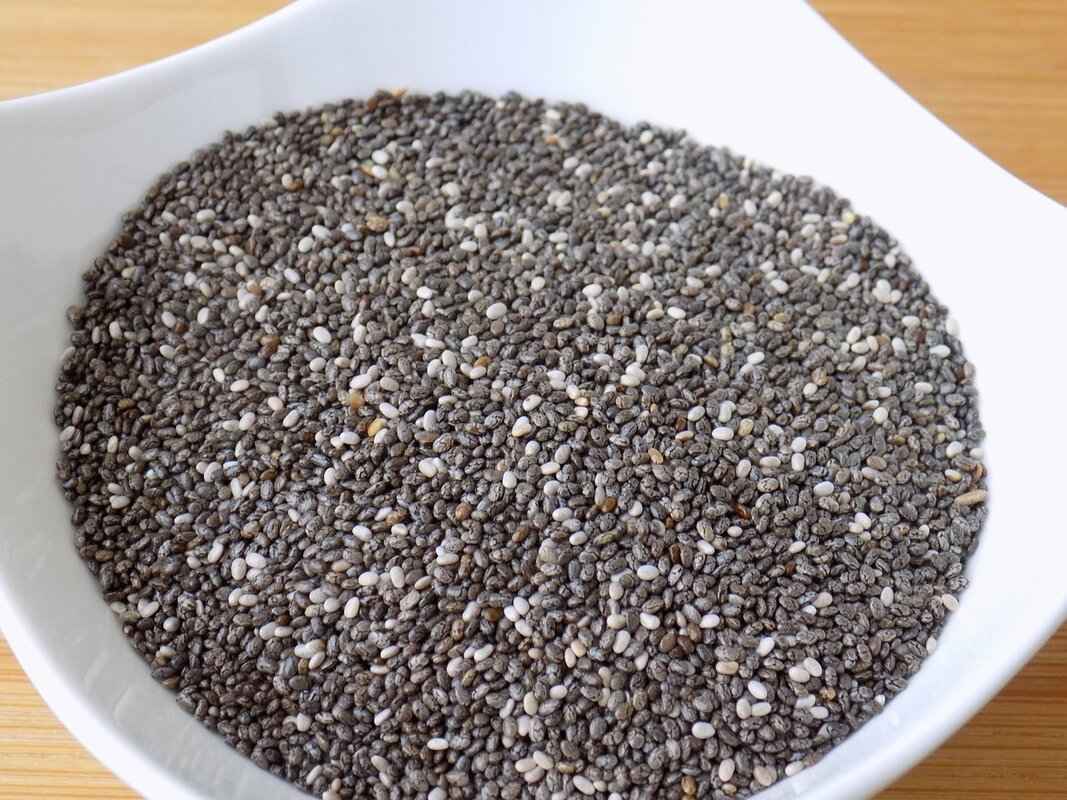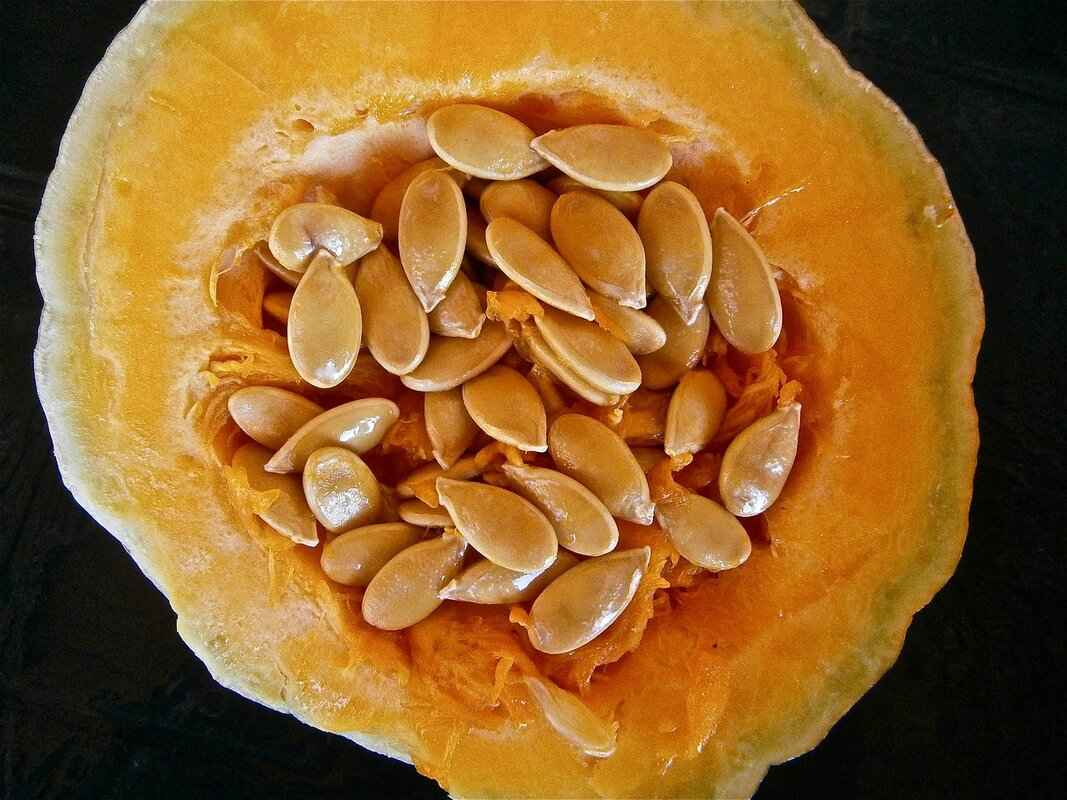Chia Seed Fiber has gained recognition as a gut-healthy superfood, and for good reason. This article delves into the remarkable nutritional benefits of chia seed fiber, its significant role in promoting gut health, and practical methods to seamlessly incorporate it into your daily diet for enhanced well-being.
Chia seeds, derived from the Salvia hispanica plant, are tiny yet powerful seeds packed with nutrients. Historically, they were a staple in the diets of ancient civilizations, valued for their impressive fiber content and health benefits. Today, they are celebrated for their versatility and ease of incorporation into various dishes.
Fiber is a crucial component of a healthy diet, playing a vital role in digestive health. It aids in maintaining regular bowel movements and supports a balanced gut microbiome. Understanding the benefits of fiber can empower you to make informed dietary choices that enhance your overall health.
Dietary fiber is classified into two main types: soluble and insoluble. Each type contributes uniquely to digestive health:
- Soluble Fiber: Dissolves in water, forming a gel-like substance that aids in regulating blood sugar levels and lowering cholesterol.
- Insoluble Fiber: Adds bulk to stool and facilitates the movement of food through the digestive tract, preventing constipation.
Chia seeds are an exceptional source of both soluble and insoluble fiber, making them a powerful ally for digestive health. Their unique properties help maintain regularity and support a healthy gut flora, which is crucial for overall well-being.
Integrating chia seeds into your meals is both simple and versatile. Here are some practical ways to enjoy their benefits:
- Chia Seed Pudding: Combine chia seeds with milk or a milk alternative to create a creamy, nutritious pudding. This can serve as a delightful breakfast or dessert.
- Smoothies: Add chia seeds to your favorite smoothies for a nutritional boost. They blend seamlessly, enhancing the fiber content without altering the flavor.
- Baking: Incorporate chia seeds into baked goods like muffins or bread for added texture and nutrition.
While chia seeds are generally safe for most individuals, consuming them in excessive amounts may lead to digestive discomfort. It’s important to understand the recommended intake to enjoy their benefits without adverse effects.
The ideal daily intake of chia seeds ranges from 1 to 2 tablespoons. This quantity provides sufficient fiber to support digestive health while minimizing the risk of discomfort.
Though rare, some individuals may experience allergies to chia seeds. It’s essential to monitor your body’s response when introducing them into your diet, particularly if you have a history of food allergies.
In summary, chia seeds are a powerhouse of fiber and essential nutrients that can significantly enhance gut health. By incorporating them into your diet, you can experience improved digestion and overall well-being. Their ease of use and versatility make them an excellent addition to any health-conscious diet.

What Are Chia Seeds?
Chia seeds are increasingly recognized as a superfood due to their impressive nutritional profile. Derived from the Salvia hispanica plant, these tiny seeds have been a staple in various cultures for centuries. Their popularity has surged in recent years, largely due to the growing awareness of their numerous health benefits, especially their high fiber content. But what exactly makes chia seeds so special?
Chia seeds are small, oval-shaped seeds that come in various colors, including black, white, and brown. These seeds are packed with essential nutrients, making them a nutrient-dense food choice. A single ounce (about 28 grams) of chia seeds contains approximately:
- 11 grams of fiber
- 4 grams of protein
- 5 grams of omega-3 fatty acids
- Various vitamins and minerals, including calcium, magnesium, and phosphorus
Historically, chia seeds were a significant part of the diet for ancient civilizations such as the Aztecs and Mayans, who valued them for their energy-boosting properties. The word “chia” itself means “strength” in the Mayan language, highlighting their importance in these cultures.
Chia seeds are often labeled as a superfood because they provide a wide range of health benefits that can contribute to overall well-being. Here are some key reasons why they are so highly regarded:
- High Fiber Content: Chia seeds are an excellent source of both soluble and insoluble fiber, which aids in digestion and helps maintain a healthy gut.
- Rich in Antioxidants: These seeds contain powerful antioxidants that help combat oxidative stress and inflammation in the body.
- Heart Health: The omega-3 fatty acids found in chia seeds can help lower cholesterol levels and reduce the risk of heart disease.
- Weight Management: The high fiber content can promote a feeling of fullness, which may help with weight control.
The fiber in chia seeds plays a crucial role in maintaining gut health. By promoting regular bowel movements and supporting a healthy gut microbiome, chia seeds can help prevent digestive issues. Their unique ability to absorb water allows them to expand in the stomach, which can further enhance the sensation of fullness and aid in digestion.
Adding chia seeds to your diet is simple and versatile. Here are some practical ways to enjoy them:
- Chia Seed Pudding: Combine chia seeds with your choice of milk or a dairy alternative, let it sit overnight, and enjoy a delicious and nutritious pudding.
- Smoothies: Blend chia seeds into your smoothies for an added nutrient boost without altering flavor.
- Baking: Incorporate chia seeds into baked goods such as muffins or bread for added texture and nutrition.
In conclusion, chia seeds are a remarkable addition to any diet, offering a plethora of health benefits, particularly for gut health. With their rich nutrient profile and versatility in the kitchen, they are undoubtedly a superfood worth incorporating into your daily meals.

Why Is Fiber Important for Gut Health?
Fiber is an essential component of a balanced diet, playing a pivotal role in maintaining optimal digestive health. It acts as a natural regulator of bowel movements and contributes significantly to the well-being of the gut microbiome. By understanding the importance of fiber, you can make informed dietary choices that promote a healthy lifestyle.
Fiber is categorized into two main types: soluble and insoluble. Both types are vital for digestion, but they serve different functions:
- Soluble Fiber: This type dissolves in water, forming a gel-like substance that can help regulate blood sugar levels and lower cholesterol. Foods rich in soluble fiber include oats, beans, and fruits.
- Insoluble Fiber: This type does not dissolve in water and adds bulk to the stool, aiding in the movement of food through the digestive tract. Whole grains, nuts, and vegetables are excellent sources of insoluble fiber.
One of the primary benefits of fiber is its ability to promote regular bowel movements. By adding bulk to the stool, insoluble fiber helps prevent constipation and ensures that waste is expelled efficiently from the body. This regularity is crucial for overall digestive health and can help prevent various gastrointestinal disorders.
Fiber also plays a significant role in nurturing the gut microbiome, the community of microorganisms that reside in our intestines. A healthy microbiome is essential for digestion, nutrient absorption, and immune function. Fiber acts as a prebiotic, providing nourishment for beneficial gut bacteria. When these bacteria ferment fiber, they produce short-chain fatty acids (SCFAs), which have anti-inflammatory properties and contribute to gut health.
Incorporating sufficient fiber into your diet offers numerous health benefits, including:
- Weight Management: High-fiber foods are often more filling, helping to control appetite and reduce overall calorie intake.
- Heart Health: Soluble fiber can lower cholesterol levels, reducing the risk of heart disease.
- Blood Sugar Control: Fiber slows the absorption of sugar, helping to maintain stable blood sugar levels, which is particularly beneficial for individuals with diabetes.
The recommended daily intake of fiber varies by age and gender, but a general guideline is:
- Women: 25 grams per day
- Men: 38 grams per day
Incorporating a variety of fiber-rich foods into your diet can help you meet these recommendations. Consider adding fruits, vegetables, whole grains, and legumes to your meals.
While fiber is beneficial, consuming it in excessive amounts can lead to digestive discomfort, including bloating and gas. It’s essential to increase fiber intake gradually and drink plenty of water to help your digestive system adjust.
In conclusion, fiber is a vital nutrient that supports digestive health by promoting regular bowel movements and fostering a healthy gut microbiome. By understanding its importance and incorporating a variety of fiber-rich foods into your diet, you can enhance your overall well-being and make informed dietary choices.
Types of Dietary Fiber
Types of Dietary Fiber:
Dietary fiber is an essential component of a healthy diet, playing a significant role in digestive health and overall well-being. Fiber is primarily categorized into two types: soluble and insoluble. Each type has distinct properties and benefits, making it vital to incorporate both into your daily nutrition.
Soluble fiber dissolves in water, forming a gel-like substance in the digestive tract. This type of fiber is known for its ability to help regulate blood sugar levels and lower cholesterol. Foods rich in soluble fiber include:
- Oats
- Beans
- Fruits such as apples and citrus
- Barley
- Chia seeds
By slowing digestion, soluble fiber can enhance satiety, helping to control appetite and manage weight. Additionally, it promotes a healthy gut microbiome by serving as a prebiotic, feeding beneficial bacteria in the intestines.
Insoluble fiber, on the other hand, does not dissolve in water. It adds bulk to stool and aids in moving food through the digestive tract. This type of fiber is crucial for preventing constipation and promoting regular bowel movements. Common sources of insoluble fiber include:
- Whole grains
- Nuts and seeds
- Vegetables like carrots and celery
- Wheat bran
Insoluble fiber also plays a role in reducing the risk of developing certain digestive disorders, such as diverticulitis and hemorrhoids, by keeping the digestive system functioning smoothly.
Incorporating both soluble and insoluble fiber into your diet is essential for optimal health. While soluble fiber aids in heart health and blood sugar control, insoluble fiber ensures that your digestive system operates efficiently. A diet rich in both types of fiber can:
- Enhance digestive health
- Support weight management
- Reduce the risk of chronic diseases
- Improve gut microbiome diversity
The recommended daily intake of fiber varies by age and gender, but a general guideline suggests:
- Women: 25 grams
- Men: 38 grams
However, most people do not meet these recommendations. Gradually increasing fiber intake while ensuring adequate hydration can help prevent digestive discomfort.
Here are some practical ways to boost your fiber consumption:
- Start your day with a fiber-rich breakfast, such as oatmeal topped with fruits.
- Incorporate beans or lentils into soups and salads.
- Choose whole grain products over refined ones.
- Add vegetables to every meal, aiming for a variety of colors and types.
- Snack on nuts, seeds, or fresh fruits instead of processed snacks.
By understanding the different types of dietary fiber and their unique benefits, you can make informed choices that promote better digestion and overall health. Remember, a balanced diet that includes both soluble and insoluble fiber is key to achieving optimal well-being.
Soluble Fiber and Its Benefits
Soluble fiber is a remarkable component of our diet, known for its ability to dissolve in water and form a gel-like substance. This unique property allows it to play a vital role in various bodily functions, particularly in regulating blood sugar levels and lowering cholesterol. These benefits are crucial for maintaining heart health and promoting better digestive function.
Soluble fiber is found in a variety of foods, including fruits, vegetables, legumes, and whole grains. When consumed, it absorbs water and expands, creating a viscous gel that slows down digestion. This process not only aids in nutrient absorption but also helps in stabilizing blood sugar levels after meals.
One of the primary benefits of soluble fiber is its ability to regulate blood sugar levels. By slowing down the digestion and absorption of carbohydrates, soluble fiber helps prevent spikes in blood sugar, making it particularly beneficial for individuals with diabetes or those at risk of developing the condition. This regulation leads to more stable energy levels throughout the day.
In addition to blood sugar regulation, soluble fiber has been shown to effectively lower cholesterol levels. It binds to bile acids in the digestive system, which are made from cholesterol, and helps to eliminate them from the body. This process prompts the liver to use more cholesterol to produce new bile acids, thereby reducing overall cholesterol levels in the bloodstream. This is particularly important for heart health, as high cholesterol is a significant risk factor for cardiovascular diseases.
- Oats: A classic breakfast choice rich in soluble fiber.
- Beans and Lentils: Excellent sources that can be added to soups or salads.
- Fruits: Apples, oranges, and berries are particularly high in soluble fiber.
- Vegetables: Carrots and Brussels sprouts are great additions to your diet.
- Chia Seeds: These tiny seeds are packed with soluble fiber and can be easily incorporated into various dishes.
Soluble fiber not only aids in regulating blood sugar and cholesterol but also contributes to overall digestive health. By forming a gel-like substance, it helps to soften stool and promote regular bowel movements, reducing the risk of constipation. Additionally, it serves as a prebiotic, feeding the beneficial bacteria in the gut, which is essential for a healthy microbiome.
Incorporating more soluble fiber into your diet can be simple and delicious. Start your day with a bowl of oatmeal topped with fresh fruit, or add beans to your salads and soups. Consider making a chia seed pudding by soaking chia seeds in almond milk overnight for a nutritious breakfast or snack. The versatility of soluble fiber-rich foods makes it easy to enhance your meals while reaping the health benefits.
While soluble fiber is beneficial, it’s important to consume it in moderation. Overconsumption can lead to digestive discomfort, including bloating and gas. Gradually increasing your fiber intake and drinking plenty of water can help mitigate these effects.
In conclusion, soluble fiber is an essential part of a balanced diet, offering numerous health benefits, including regulating blood sugar levels, lowering cholesterol, and supporting digestive health. By understanding its importance and incorporating it into your daily meals, you can significantly enhance your overall well-being.
Insoluble Fiber and Its Role
Insoluble fiber is a vital component of our diet that plays a significant role in maintaining digestive health. Unlike soluble fiber, which dissolves in water, insoluble fiber adds bulk to stool and is crucial for moving food through the digestive tract. This process is essential for preventing constipation and promoting overall gut health.
When we consume foods rich in insoluble fiber, such as whole grains, nuts, and seeds, we provide our bodies with the necessary tools to keep our digestive systems functioning smoothly. This type of fiber does not break down in the stomach; instead, it passes through our intestines intact, absorbing water and adding bulk to the stool. This action helps to regulate bowel movements and prevent issues such as constipation, making it a key player in maintaining a healthy gut.
One of the primary functions of insoluble fiber is to prevent constipation. By adding bulk to the stool, it encourages the intestines to contract and push waste through the digestive system more efficiently. This is particularly important for individuals who may struggle with irregular bowel movements or those who consume a diet low in fiber.
Insoluble fiber is not only beneficial for preventing constipation; it also plays a role in maintaining overall gut health. By promoting regularity, it helps to reduce the risk of developing digestive disorders, such as diverticulitis and hemorrhoids. Furthermore, a diet rich in insoluble fiber is associated with a lower risk of chronic diseases, including heart disease and certain types of cancer.
The recommended daily intake of fiber varies depending on age and gender, but it is generally advised that adults consume between 25 to 38 grams of fiber per day, with a significant portion coming from insoluble sources. Incorporating a variety of fiber-rich foods into your diet can help you meet these recommendations while also enjoying a diverse range of nutrients.
- Whole grains (brown rice, quinoa, whole wheat bread)
- Nuts and seeds (almonds, walnuts, flaxseeds)
- Vegetables (carrots, cucumbers, celery)
- Legumes (beans, lentils, peas)
- Fruit with edible skins (apples, pears, berries)
By including these foods in your meals, you can easily boost your intake of insoluble fiber. For example, adding a handful of nuts to your morning oatmeal or snacking on raw vegetables can significantly enhance your fiber consumption.
While insoluble fiber is beneficial, it is important to increase your intake gradually to avoid digestive discomfort. Sudden spikes in fiber consumption can lead to bloating, gas, or cramping. Drinking plenty of water is essential when increasing fiber intake, as it helps to facilitate digestion and prevent any potential side effects.
In conclusion, incorporating insoluble fiber into your diet is essential for maintaining digestive health and preventing constipation. With its ability to add bulk to stool and promote regular bowel movements, it stands out as a crucial nutrient for overall well-being. By being mindful of your fiber intake and choosing a variety of fiber-rich foods, you can support your digestive health and enjoy the numerous benefits that come with it.
The Role of Chia Seed Fiber in Digestion
Chia seeds, derived from the Salvia hispanica plant, have gained popularity as a nutrient-rich superfood. One of their standout features is their impressive fiber content, which can significantly enhance digestive health. In this section, we will explore how chia seed fiber contributes to a healthier digestive system and the benefits it offers.
- Types of Fiber in Chia Seeds: Chia seeds are a unique source of both soluble and insoluble fiber. This combination is essential for effective digestion.
- Soluble Fiber Benefits: Soluble fiber dissolves in water, forming a gel-like substance that slows digestion and helps regulate blood sugar levels. This can prevent spikes in blood sugar, making chia seeds a great choice for those managing diabetes.
- Insoluble Fiber Benefits: Insoluble fiber adds bulk to the stool, which is vital for maintaining regular bowel movements. It aids in moving food through the digestive tract, helping to prevent constipation.
When chia seeds are consumed, they absorb liquid and expand, creating a gel-like consistency. This property not only contributes to a feeling of fullness but also supports digestive function by promoting a healthy gut environment. The gel formed by chia seeds can help to slow down digestion, allowing for better nutrient absorption and a more gradual release of energy.
Furthermore, chia seeds are known to support gut flora. The fiber in chia seeds acts as a prebiotic, providing nourishment for beneficial gut bacteria. A healthy gut microbiome is crucial for overall health, as it plays a role in immune function, weight management, and even mental health.
Incorporating chia seeds into your diet can be simple and delicious. Here are a few practical ways to do so:
- Chia Seed Pudding: Mix chia seeds with your choice of milk or milk alternative, let them soak overnight, and enjoy a creamy pudding.
- Smoothies: Add a tablespoon of chia seeds to your favorite smoothie for an extra fiber boost without altering the taste.
- Baking: Incorporate chia seeds into baked goods like muffins or bread for added texture and nutrition.
While chia seeds offer numerous benefits, moderation is key. It is recommended to consume about 1-2 tablespoons daily to reap the health benefits without overwhelming your digestive system. Some individuals may experience digestive discomfort if they consume too many chia seeds at once, particularly if they are not used to a high-fiber diet.
In summary, chia seeds are a powerful ally for digestive health, thanks to their rich fiber content and unique properties. By incorporating them into your daily meals, you can support your digestive system, maintain regularity, and promote a healthy gut microbiome. With their versatility and numerous health benefits, chia seeds are a fantastic addition to any diet.

How to Incorporate Chia Seeds into Your Diet?
Chia seeds are a fantastic addition to any diet, offering a wealth of nutritional benefits, particularly in terms of fiber content. How can you effectively incorporate these tiny powerhouses into your meals? Below are some practical and creative ways to ensure you enjoy the benefits of chia seeds while enhancing your daily fiber intake.
One of the simplest ways to enjoy chia seeds is by making chia seed pudding. This dish can be prepared in advance and customized to your taste:
- Basic Recipe: Combine 1/4 cup of chia seeds with 1 cup of milk (dairy or plant-based) and let it sit in the refrigerator overnight. The seeds will absorb the liquid and form a gel-like consistency.
- Flavor Variations: Add vanilla extract, cocoa powder, or fruit puree to enhance the flavor. Top with fresh fruits, nuts, or a drizzle of honey for added nutrition.
Another excellent way to incorporate chia seeds is by adding them to smoothies. They blend seamlessly and provide a nutritional boost:
- How to Add: Just toss 1-2 tablespoons of chia seeds into your blender along with your favorite fruits, vegetables, and liquids. They will thicken the smoothie while adding fiber and omega-3 fatty acids.
- Texture and Flavor: Chia seeds have a neutral flavor, so they won’t alter the taste of your smoothie but will give it a satisfying texture.
For those who love to bake, chia seeds can be a valuable ingredient:
- Egg Replacement: Mix 1 tablespoon of chia seeds with 2.5 tablespoons of water and let it sit for 10-15 minutes. This mixture works as a vegan egg substitute in recipes.
- Incorporation in Recipes: Add chia seeds to muffins, breads, or pancakes to enhance their fiber content. They can also be sprinkled on top of baked goods for added crunch.
Incorporating chia seeds into salads and soups is another easy method:
- Salads: Sprinkle a tablespoon of chia seeds over your salad for added texture and nutrition. They can absorb the dressing, enhancing the flavor.
- Soups: Mix chia seeds into soups or stews to thicken the consistency and boost fiber content. Just be mindful of the amount, as they can absorb a lot of liquid.
For a refreshing drink, consider making a chia seed beverage:
- Chia Fresca: Combine 1 tablespoon of chia seeds with 1 cup of water or coconut water. Add a squeeze of lemon or lime for flavor. Let it sit for about 10 minutes before drinking, allowing the seeds to swell.
- Health Benefits: This drink not only hydrates but also provides a good source of fiber and essential nutrients.
In conclusion, incorporating chia seeds into your diet is not only simple but also versatile. By using these methods, you can easily increase your fiber intake and enjoy numerous health benefits. Whether you choose to make a pudding, enhance your smoothies, or add them to your baked goods, chia seeds are a fantastic way to boost your overall nutrition.
Chia Seed Pudding Recipes
Chia seed pudding has gained immense popularity as a nutritious and versatile dish that can be enjoyed at any time of the day. This delightful treat not only satisfies your sweet tooth but also packs a powerful nutritional punch. By combining chia seeds with milk or a milk alternative, you create a creamy base that serves as the foundation for a variety of flavors and toppings.
Chia seeds are rich in fiber, omega-3 fatty acids, and antioxidants, making them a superfood that supports overall health. When soaked in liquid, these tiny seeds absorb significant amounts of water, expanding to create a gel-like consistency. This unique property not only enhances the texture of the pudding but also aids in digestion by promoting feelings of fullness.
Creating chia seed pudding is incredibly simple. Here’s a basic recipe to get you started:
- Ingredients:
- 1/4 cup chia seeds
- 1 cup milk or milk alternative (almond, coconut, soy, etc.)
- 1-2 tablespoons sweetener (honey, maple syrup, or agave)
- 1 teaspoon vanilla extract (optional)
- Instructions:
- In a mixing bowl, combine the chia seeds, milk, sweetener, and vanilla extract.
- Stir well to prevent clumping.
- Let the mixture sit for about 5 minutes, then stir again.
- Cover and refrigerate for at least 2 hours or overnight until it thickens.
- Serve chilled, topped with your favorite fruits, nuts, or granola.
The beauty of chia seed pudding lies in its versatility. Here are some delicious flavor variations to try:
- Chocolate Chia Pudding: Add 2 tablespoons of unsweetened cocoa powder and a bit more sweetener for a rich chocolate flavor.
- Berry Blast: Mix in a handful of fresh or frozen berries before refrigerating. Top with additional berries when serving.
- Coconut Lime: Use coconut milk and add the zest of one lime for a tropical twist.
- Peanut Butter Banana: Stir in a tablespoon of peanut butter and top with sliced bananas for a satisfying treat.
Incorporating chia seed pudding into your diet can offer numerous health benefits:
- Supports Digestive Health: The high fiber content aids in digestion and helps maintain bowel regularity.
- Promotes Heart Health: Omega-3 fatty acids found in chia seeds contribute to cardiovascular health.
- Encourages Weight Management: The gel-like texture promotes satiety, which can help control appetite.
To achieve the best results with your chia seed pudding, consider the following tips:
- Experiment with different liquids, such as flavored almond milk or coconut water, to find your preferred taste.
- Adjust the sweetness according to your preference; some may prefer a less sweet pudding.
- For a creamier texture, blend the mixture before refrigerating.
Chia seed pudding is not only a delightful and nutritious option but also a canvas for creativity in the kitchen. With endless flavor possibilities and health benefits, it’s an excellent addition to any diet. So why not give it a try and explore the world of chia seed pudding today?
Adding Chia Seeds to Smoothies
Incorporating chia seeds into your smoothies is a fantastic way to boost their nutritional value without compromising flavor. These tiny seeds are packed with essential nutrients, making them an ideal addition to any smoothie recipe. But how exactly do chia seeds enhance your smoothies, and what benefits do they offer?
Chia seeds are renowned for their impressive nutritional profile. They are rich in omega-3 fatty acids, which are crucial for heart health, as well as being an excellent source of fiber and protein. Just a single ounce of chia seeds contains about 11 grams of fiber, which aids in digestion and promotes a feeling of fullness. Additionally, they are loaded with antioxidants, vitamins, and minerals, making them a true superfood.
When added to smoothies, chia seeds offer several benefits:
- Texture Enhancement: Chia seeds absorb liquid and swell up, creating a gel-like consistency that can add a creamy texture to your smoothies.
- Nutrient Boost: They enrich your smoothie with essential nutrients without altering the taste significantly.
- Energy Source: The combination of protein, healthy fats, and fiber provides a sustained energy release, making your smoothie a perfect meal replacement or post-workout snack.
Integrating chia seeds into your smoothies is simple. Here’s a quick guide:
- Choose Your Base: Start with your favorite liquid base, such as almond milk, coconut water, or yogurt.
- Add Fruits and Vegetables: Include a variety of fruits and vegetables for flavor and nutrients. Bananas, spinach, and berries work exceptionally well.
- Incorporate Chia Seeds: Add 1-2 tablespoons of chia seeds. For best results, let them soak in the liquid for about 10-15 minutes before blending to allow them to expand.
- Blend and Enjoy: Blend until smooth and enjoy your nutrient-packed smoothie!
While chia seeds are generally safe for most people, it’s essential to consume them in moderation. Overconsumption may lead to digestive discomfort due to their high fiber content. It’s advisable to start with small amounts and gradually increase your intake as your body adjusts.
Aside from smoothies, chia seeds can be incorporated into various recipes:
- Chia Pudding: Combine chia seeds with your choice of milk and let them sit overnight for a delicious breakfast.
- Baking: Add chia seeds to muffins, bread, or granola for an extra nutritional boost.
- Salads: Sprinkle chia seeds on salads for added crunch and nutrition.
In summary, adding chia seeds to your smoothies is a simple and effective way to enhance their nutritional profile. With their numerous health benefits and versatility, chia seeds are a valuable ingredient that can contribute to a healthier diet. So, why not give it a try and enjoy the advantages of this superfood in your next smoothie?

Are There Any Side Effects of Chia Seeds?
Chia seeds have gained immense popularity as a nutritional powerhouse, often hailed for their health benefits, particularly their high fiber content. However, it’s important to understand that, like many foods, they can have side effects, especially when consumed in excess. This article delves into the potential side effects of chia seeds, helping you navigate their incorporation into your diet safely.
While chia seeds are generally safe for most individuals, consuming them in large quantities can lead to digestive discomfort. This discomfort may manifest as bloating, gas, or even constipation. The high fiber content in chia seeds, while beneficial, can overwhelm the digestive system if introduced too rapidly or in excessive amounts.
The recommended daily intake of chia seeds is approximately 1 to 2 tablespoons (15-30 grams). This amount provides a sufficient supply of fiber without causing digestive issues. Exceeding this recommendation, especially for those unaccustomed to high-fiber diets, can lead to adverse effects.
Although rare, some individuals may experience allergic reactions to chia seeds. Symptoms can include itching, swelling, or difficulty breathing. If you suspect an allergy, it is crucial to discontinue use and consult a healthcare professional.
Chia seeds may interact with certain medications, particularly those affecting blood sugar levels or blood pressure. Due to their ability to lower blood sugar and blood pressure, it is advisable to consult with a healthcare provider if you are on medication for these conditions.
- Gradual Introduction: Start with a small amount of chia seeds and gradually increase your intake. This allows your digestive system to adjust.
- Hydration: Drink plenty of water when consuming chia seeds. They absorb liquid and expand, which can help prevent any digestive discomfort.
- Proper Preparation: Soaking chia seeds before consumption can help make them easier to digest. This process allows them to absorb water and form a gel, making them gentler on the digestive system.
Signs of overconsumption can vary from person to person but may include:
- Bloating
- Gas
- Constipation
- Stomach cramps
If you experience any of these symptoms, it may be beneficial to reduce your intake of chia seeds and monitor how your body responds.
Chia seeds are a nutritious addition to your diet, offering numerous health benefits, particularly for gut health. However, understanding the potential side effects and adhering to the recommended daily intake can help you enjoy their advantages safely. By being mindful of your consumption and listening to your body, you can incorporate chia seeds into your meals without adverse effects.
Recommended Daily Intake
Chia seeds have gained immense popularity as a superfood, thanks to their rich nutrient profile. Among their many benefits, the fiber content stands out, making them a great addition to a healthy diet. But how much should you consume to reap the benefits without causing digestive issues?
The of chia seeds is approximately 1-2 tablespoons (15-30 grams). This amount is ideal for most individuals, as it provides a sufficient dose of fiber while minimizing the risk of digestive discomfort. Chia seeds are packed with both soluble and insoluble fiber, which play distinct roles in gut health.
Consuming the right amount of chia seeds is crucial for several reasons:
- Digestive Comfort: While chia seeds are beneficial, consuming them in excess can lead to bloating, gas, or constipation. Sticking to the recommended intake helps prevent these issues.
- Optimal Nutrient Absorption: The body can effectively absorb nutrients from chia seeds when consumed in moderation, ensuring you get the most out of this superfood.
- Balanced Diet: Including a variety of foods in your diet is essential for overall health. Relying too heavily on any single food, even one as nutritious as chia seeds, can lead to nutritional imbalances.
Measuring chia seeds can be straightforward. Here are some practical tips:
- Use a standard tablespoon: One tablespoon of chia seeds is about 12 grams, making it easy to gauge your intake.
- Incorporate into meals: Add chia seeds to smoothies, yogurt, or oatmeal. This not only adds fiber but also enhances the texture and nutritional value of your meals.
- Monitor your body’s response: Everyone’s digestive system is different. Start with 1 tablespoon and gradually increase to 2 tablespoons if you feel comfortable.
While chia seeds are generally safe, it’s essential to be aware of the potential risks associated with consuming too many:
- Digestive Issues: Overeating chia seeds can lead to bloating, gas, or constipation due to their high fiber content.
- Choking Hazard: Chia seeds can absorb water and expand significantly. If consumed dry without sufficient liquid, they may pose a choking risk, especially for individuals with swallowing difficulties.
- Allergic Reactions: Although rare, some individuals may have allergies to chia seeds. If you experience any adverse reactions, discontinue use and consult a healthcare professional.
To maximize the benefits of chia seeds, consider these practical incorporation methods:
- Chia Seed Pudding: Combine chia seeds with milk or a milk alternative and let them sit overnight to create a delicious pudding.
- Smoothies: Blend chia seeds into your favorite smoothie for an added boost of fiber and nutrients.
- Baking: Add chia seeds to baked goods like muffins or bread for an extra health kick.
In summary, incorporating 1-2 tablespoons of chia seeds into your daily diet can provide significant health benefits without overwhelming your digestive system. By following the recommended intake and being mindful of your body’s responses, you can enjoy the myriad benefits of this gut-healthy superfood.
Potential Allergies and Interactions
Chia seeds are celebrated for their numerous health benefits, particularly their rich fiber content. However, it is important to recognize that, though rare, some individuals may experience allergies to chia seeds. This article delves into the potential allergies associated with chia seeds, how to recognize them, and what to do if you suspect an allergy.
Allergic reactions to chia seeds can manifest in various ways. Common symptoms may include:
- Skin Reactions: Hives, rashes, or eczema may occur in response to chia seed consumption.
- Gastrointestinal Issues: Symptoms such as nausea, vomiting, diarrhea, or abdominal pain can indicate an allergy.
- Respiratory Problems: Some individuals may experience difficulty breathing, wheezing, or nasal congestion.
If you notice any of these symptoms after consuming chia seeds, it is crucial to seek medical advice promptly.
Chia seed allergies are extremely rare, especially when compared to other food allergies such as peanuts or shellfish. However, as with any food, it is essential to be cautious, particularly for those with a history of multiple food allergies. If you have known allergies, consult with a healthcare provider before adding chia seeds to your diet.
If you suspect that you may be allergic to chia seeds, it is advisable to:
- Stop Consumption: Cease eating chia seeds immediately to prevent further reactions.
- Consult a Doctor: Schedule an appointment with a healthcare professional for an evaluation and potential allergy testing.
- Keep a Food Diary: Documenting your food intake and any symptoms can help your doctor identify potential allergens.
In addition to allergies, chia seeds may interact with certain medications. Their high fiber content can affect the absorption of medications, particularly those taken for:
- Diabetes: Chia seeds can lower blood sugar levels, which may enhance the effects of diabetes medications.
- Blood Thinners: Due to their omega-3 fatty acids, chia seeds may increase the risk of bleeding when taken with anticoagulants.
Always consult with your healthcare provider before introducing chia seeds into your diet, especially if you are on medication.
To minimize the risk of an allergic reaction, consider the following steps when introducing chia seeds into your diet:
- Start Small: Begin with a small amount, such as half a teaspoon, to gauge your body’s response.
- Monitor Your Body: Pay attention to any adverse reactions over the following 24-48 hours.
- Gradually Increase: If no reactions occur, gradually increase your intake to the recommended daily amount of 1-2 tablespoons.
In conclusion, while chia seeds offer a multitude of health benefits, it is essential to be aware of potential allergies and interactions. By taking precautions and monitoring your body’s response, you can safely enjoy the nutritional advantages of this superfood.

Conclusion: The Gut Health Benefits of Chia Seeds
Chia seeds have gained popularity in recent years as a superfood, and for good reason. These tiny seeds are not only packed with essential nutrients but also serve as a fantastic source of dietary fiber. This article delves into the myriad of benefits that chia seeds offer for gut health, how they can be incorporated into your daily diet, and why they should be a staple in your pantry.
Chia seeds, derived from the Salvia hispanica plant, are rich in omega-3 fatty acids, antioxidants, and various vitamins and minerals. However, it is their high fiber content that truly sets them apart. Just two tablespoons of chia seeds contain around 10 grams of fiber, which is roughly one-third of the daily recommended intake for adults.
Fiber is crucial for maintaining a healthy digestive system. It helps to regulate bowel movements, prevents constipation, and supports the growth of beneficial gut bacteria. A healthy gut microbiome is essential for overall health, as it plays a role in everything from digestion to immune function.
Chia seeds contain both soluble and insoluble fiber. Soluble fiber dissolves in water, forming a gel-like substance that can help to slow digestion and stabilize blood sugar levels. On the other hand, insoluble fiber adds bulk to stool and aids in moving food through the digestive tract, making it essential for preventing constipation.
- Chia Seed Pudding: Mix chia seeds with your choice of milk or a milk alternative, let it sit overnight, and enjoy a creamy breakfast or dessert.
- Smoothies: Add a tablespoon of chia seeds to your favorite smoothie for an extra nutrient boost without altering the flavor.
- Baking: Incorporate chia seeds into muffins, breads, or energy bars for added fiber and nutrition.
While chia seeds are generally safe for most individuals, consuming them in excessive amounts may lead to digestive discomfort, including bloating or gas. It is advisable to start with small quantities and gradually increase your intake.
The recommended daily intake for chia seeds is approximately 1-2 tablespoons. This amount is sufficient to reap the benefits of their fiber content without overwhelming your digestive system.
Although rare, some individuals may experience allergic reactions to chia seeds. If you are introducing them into your diet for the first time, it is wise to monitor your body’s response closely.
Incorporating chia seeds into your diet can lead to significant improvements in your digestive health. Their unique combination of soluble and insoluble fiber, along with their nutrient density, makes them a valuable addition to any meal plan. By boosting your fiber intake with chia seeds, you can enhance your gut flora, promote regularity, and enjoy overall well-being.
In summary, chia seeds are not just a trendy health food; they are a nutritional powerhouse that can provide essential benefits for your gut health. By understanding how to effectively incorporate them into your diet, you can harness their full potential for improved digestive health.
Frequently Asked Questions
- What are the health benefits of chia seeds?
Chia seeds are packed with fiber, omega-3 fatty acids, and essential nutrients. They help improve digestion, support heart health, and can even aid in weight management by promoting a feeling of fullness.
- How can I incorporate chia seeds into my meals?
You can easily add chia seeds to your diet by mixing them into smoothies, oatmeal, or yogurt. They also work great in baked goods or as a thickening agent in soups and sauces!
- Are there any side effects of consuming chia seeds?
While chia seeds are generally safe, consuming them in large amounts may cause digestive discomfort for some people. It’s best to start with 1-2 tablespoons per day and adjust as needed.
- Can chia seeds help with weight loss?
Yes! Chia seeds can aid in weight loss by keeping you full longer due to their high fiber content, which slows down digestion and reduces hunger cravings.
- Are chia seeds suitable for everyone?
Most people can enjoy chia seeds without issues, but if you have a history of allergies or digestive problems, it’s wise to consult with a healthcare professional before adding them to your diet.














